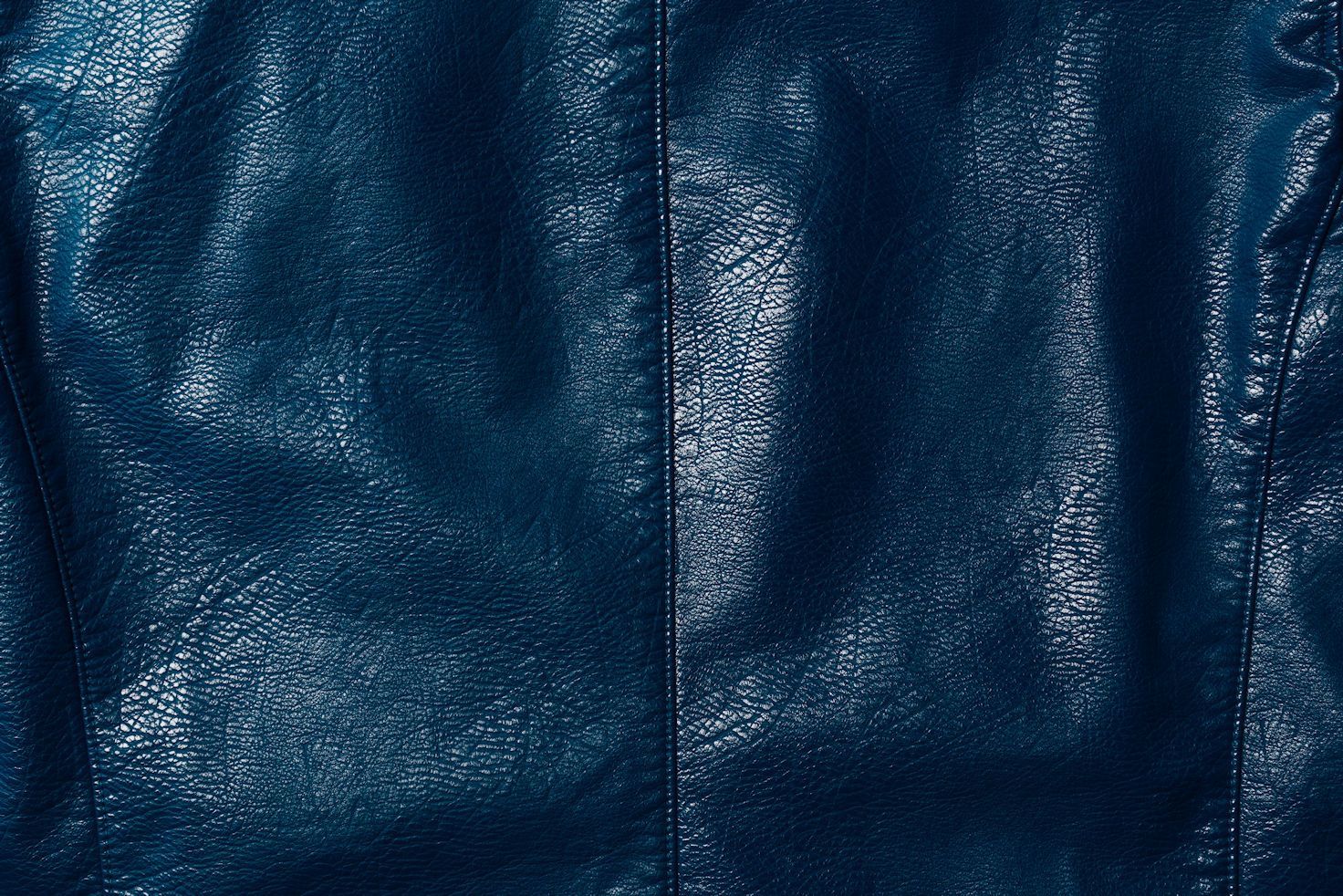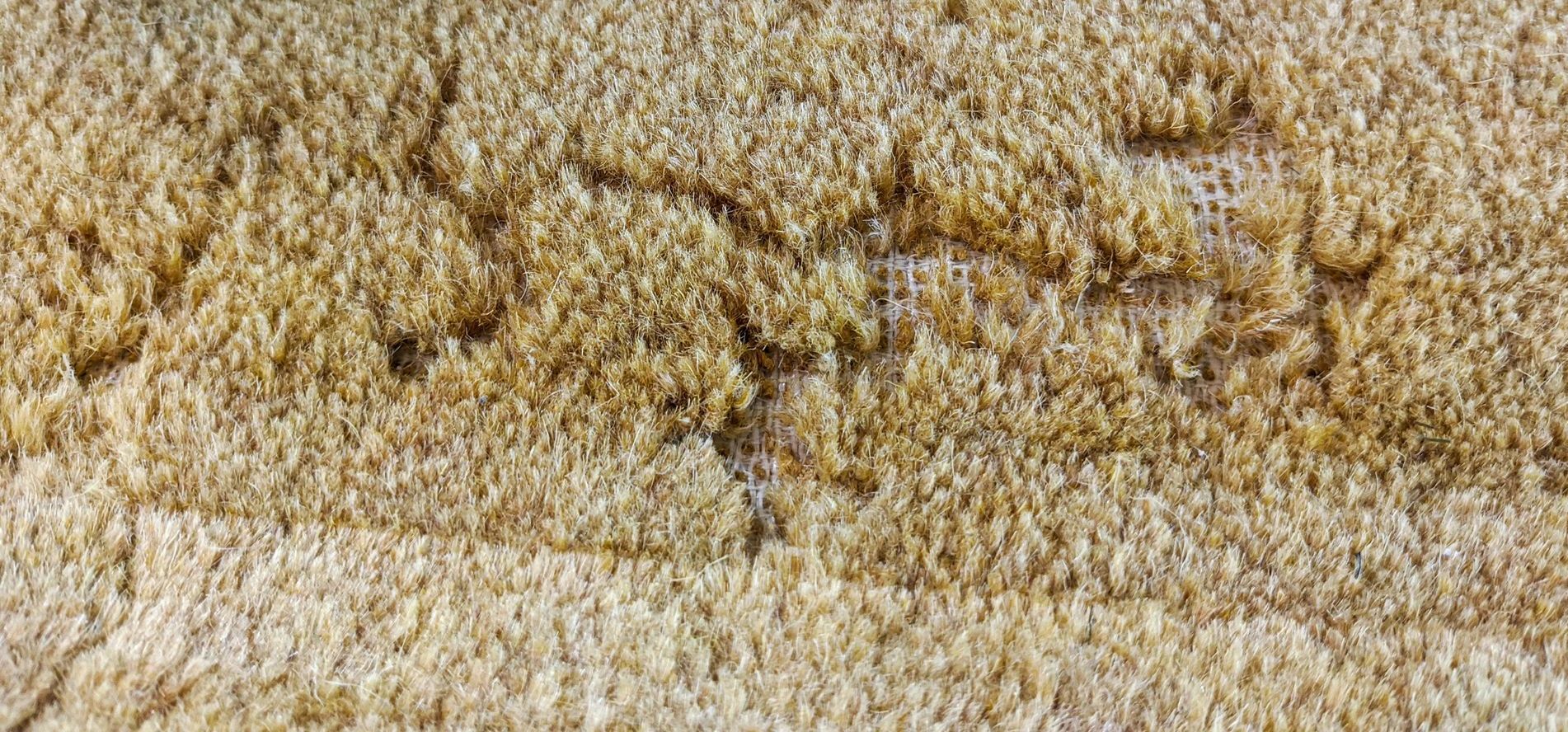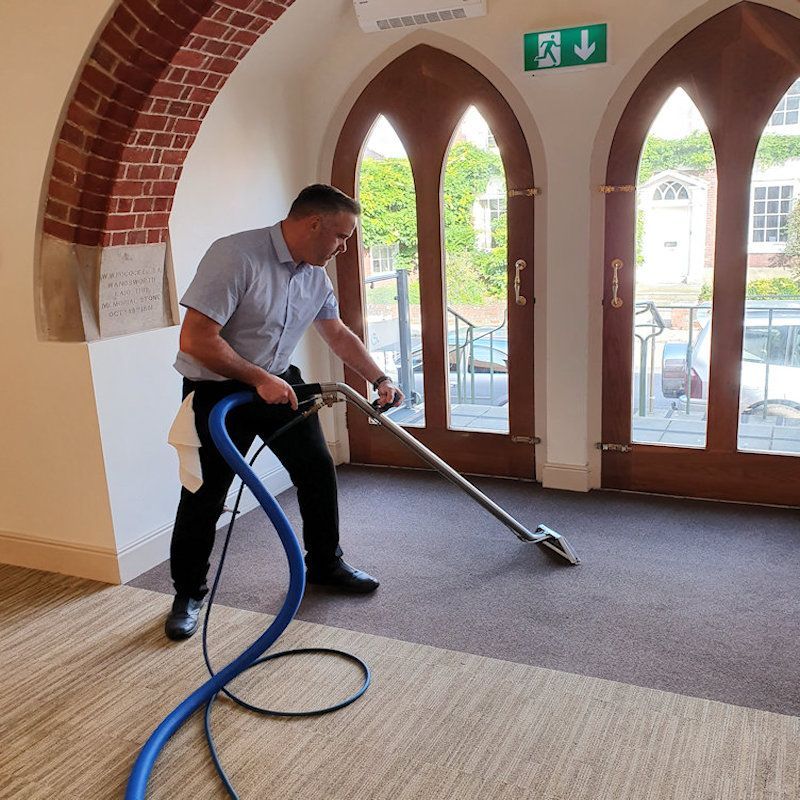Keep Your Yacht Upholstery Looking Luxurious
The Ultimate Guide to Yacht Upholstery Cleaning and Leather Restoration
Owning a yacht is a thrilling experience, but keeping it in pristine condition requires some know-how, especially when it comes to upholstery and leather care. Your vessel isn't just a mode of transportation; it's a symbol of luxury and elegance. That's why understanding the ins and outs of yacht upholstery cleaning and leather restoration is crucial. We'll guide you through expert techniques for maintaining marine upholstery, ensuring your yacht's interior stays as inviting as the day you first set sail. So, let's dive into how you can preserve the charm and comfort of your luxury vessel, making every voyage a delightful experience.
Introduction to Yacht Upholstery Cleaning
Yacht upholstery cleaning is a crucial aspect of maintaining your luxury vessel's appearance and value. This section will explore why regular maintenance is essential and the unique challenges posed by marine environments.
Importance of Regular Maintenance
Regular maintenance of your yacht's upholstery is not just about aesthetics; it's about preserving your investment. Proper care can extend the life of your yacht's interior, saving you money in the long run.
Consistent cleaning prevents the build-up of dirt, salt, and moisture that can lead to mould and mildew growth. These not only damage the fabric but can also pose health risks to passengers.
Moreover, well-maintained upholstery contributes to a more enjoyable sailing experience. Clean, fresh-smelling interiors enhance the luxury feel of your yacht, impressing guests and creating a more comfortable environment for everyone on board.
Challenges in Marine Environments
Marine environments present unique challenges for yacht upholstery. The combination of saltwater, sun exposure, and humidity can wreak havoc on even the highest quality materials.
Saltwater is particularly corrosive and can weaken fabric fibres over time. UV rays from the sun can cause fading and deterioration of upholstery, especially in areas that receive direct sunlight.
High humidity levels in marine environments create ideal conditions for mould and mildew growth. This can lead to unpleasant odours and potential health issues if left unchecked. Understanding these challenges is crucial for implementing effective cleaning and maintenance strategies.
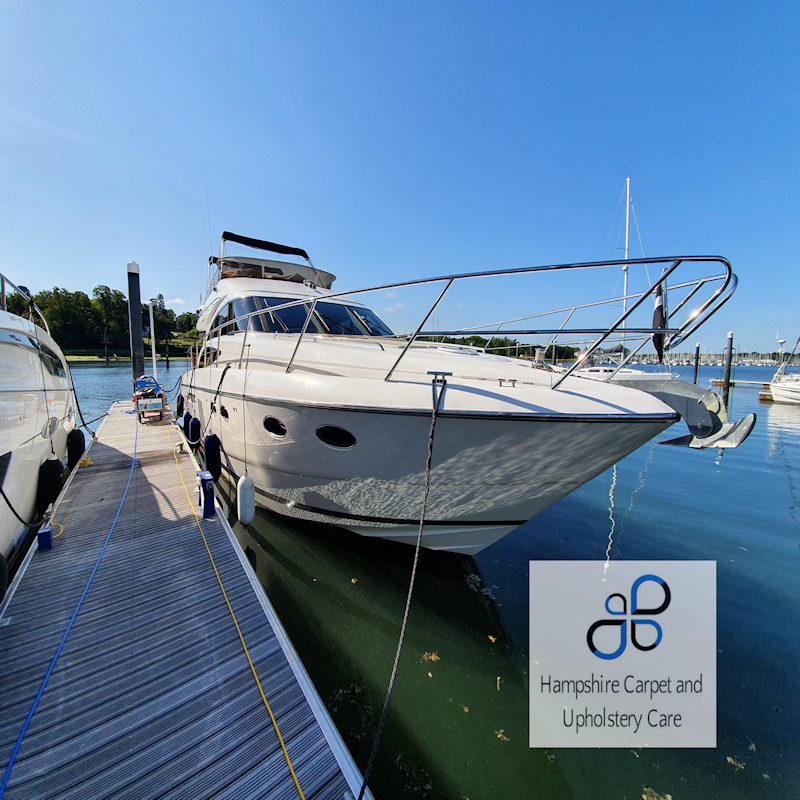
Effective Yacht Upholstery Cleaning Techniques
Proper cleaning techniques are essential for maintaining the beauty and longevity of your yacht's upholstery. This section will cover specialized cleaning products and a step-by-step process for effective cleaning.
Specialized Cleaning Products
Choosing the right cleaning products is crucial for effective yacht upholstery maintenance. Marine-grade cleaners are specifically formulated to tackle the unique challenges of boat interiors.
Look for pH-neutral cleaners that won't damage delicate fabrics or leather. Avoid harsh chemicals that can strip protective coatings or cause discoloration.
For tough stains, enzymatic cleaners can be effective without causing damage. Always test any new product on an inconspicuous area first to ensure compatibility with your upholstery.
Step-by-Step Cleaning Process
A systematic approach to cleaning your yacht's upholstery will yield the best results. Follow these steps for effective cleaning:
- Remove loose debris with a vacuum or soft brush.
- Prepare your cleaning solution according to the manufacturer's instructions.
- Apply the cleaner using a soft cloth or sponge, working in small sections.
- Gently agitate the surface to lift dirt and stains.
- Rinse thoroughly with clean water to remove all cleaning residue.
Allow the upholstery to dry completely before use. For leather surfaces, apply a marine-grade leather conditioner after cleaning to maintain suppleness and prevent cracking.

Leather Restoration Essentials
Leather upholstery adds a touch of luxury to any yacht, but it requires special care to maintain its appearance. This section will cover how to identify common leather issues and techniques for restoring leather lustre.
Identifying Common Leather Issues
Leather upholstery can suffer from various issues due to exposure to marine conditions. Common problems include cracking, fading, and water damage.
Cracking often occurs in areas of high use or where the leather is exposed to direct sunlight. Fading is another result of UV exposure and can be particularly noticeable on darker leathers.
Water damage can lead to staining and warping of the leather. Salt deposits from seawater can also cause discoloration and damage if not promptly cleaned. Recognizing these issues early is key to effective restoration.
Techniques for Restoring Leather Lustre
Restoring leather to its original lustre requires careful attention and the right techniques. Start by thoroughly cleaning the leather with a pH-neutral cleaner designed for marine use.
For minor scratches and scuffs, a leather repair kit can be effective. These typically include a cleaner, filler, and colorant to match your leather's shade.
Deep conditioning is essential for restoring suppleness to dry or cracked leather. Use a marine-grade leather conditioner, working it into the leather in circular motions.
For severe damage or discoloration, professional restoration may be necessary. Experts can recolor and refinish leather surfaces, restoring them to like-new condition.
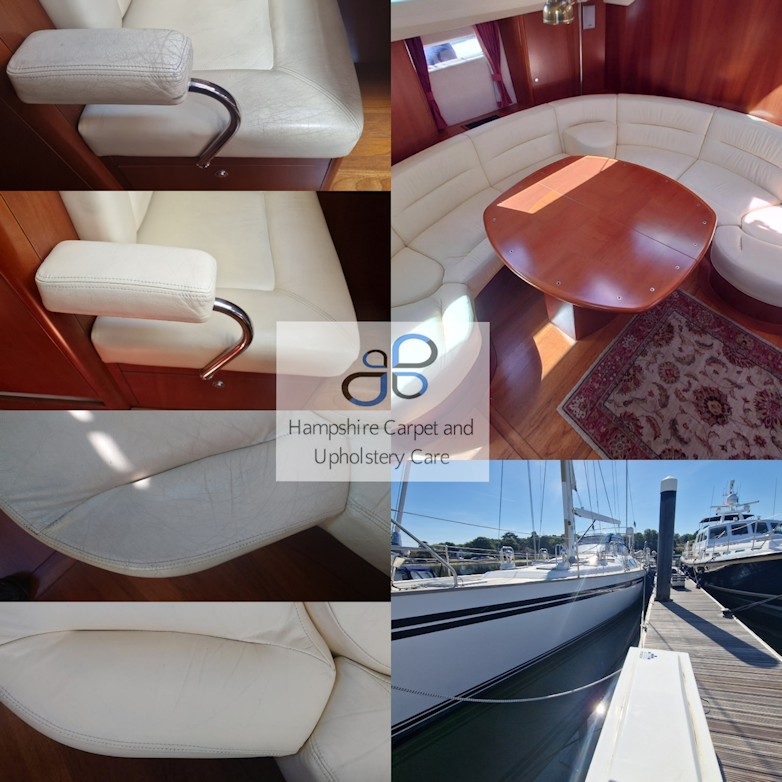
Choosing the Right Professional Service
While regular maintenance can be done by yacht owners, professional cleaning and restoration services offer numerous benefits. This section will explore these advantages and what to look for in a service provider.
Benefits of Expert Assistance
Professional yacht upholstery cleaning services bring expertise and specialized equipment to the task. They can tackle tough stains and issues that might be challenging for DIY efforts.
Experts are familiar with a wide range of fabrics and materials used in yacht interiors. This knowledge allows them to choose the most effective and safe cleaning methods for each surface.
Professional services can also provide preventative treatments to protect your upholstery from future damage. This can include applying stain-resistant coatings or UV protectants.
What to Look for in a Service Provider
When selecting a professional yacht upholstery cleaning service, consider the following factors:
- Experience specifically with marine upholstery
- Positive reviews and references from other yacht owners
- Proper insurance and certifications
- Use of eco-friendly and marine-safe cleaning products
- Detailed explanation of their cleaning process and techniques
Look for providers who offer a satisfaction guarantee and are willing to provide a written estimate before beginning work. Discussing your needs with potential service providers can help ensure you choose the right company for your yacht's upholstery care.
Maintaining Your Yacht's Interior
Regular maintenance is key to keeping your yacht's interior looking its best between professional cleanings. This section will provide routine maintenance tips and strategies for protecting against saltwater and sun damage.
Routine Maintenance Tips
Implementing a routine maintenance schedule can significantly extend the life of your yacht's upholstery. Regular vacuuming or brushing removes loose dirt and debris before it can become ground into the fabric.
Spot cleaning spills immediately can prevent stains from setting. Keep a marine-grade upholstery cleaner and soft cloths readily available for quick clean-ups.
Rotate cushions and pillows regularly to ensure even wear. This is particularly important for areas that receive direct sunlight or heavy use.
Protecting Against Saltwater and Sun Damage
Saltwater and sun exposure are two of the biggest threats to yacht upholstery. Installing UV-resistant window films can significantly reduce sun damage to interior surfaces.
After each outing, wipe down upholstery with fresh water to remove salt residue. Pay special attention to areas near windows or doors where saltwater spray may enter.
Consider using fabric protectors designed for marine use. These can repel water and resist stains, providing an extra layer of defence against the elements.
When the yacht is not in use, use covers to protect upholstery from sun exposure. This is especially important for leather surfaces, which are particularly susceptible to UV damage.


